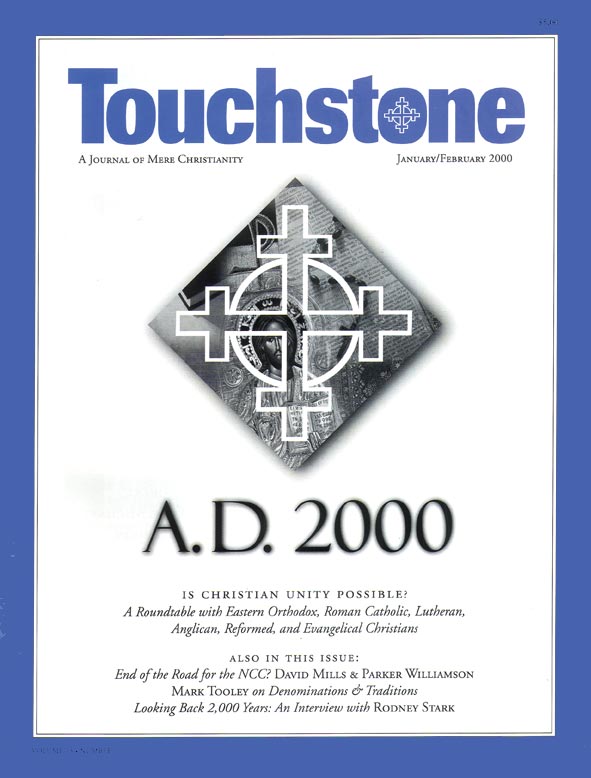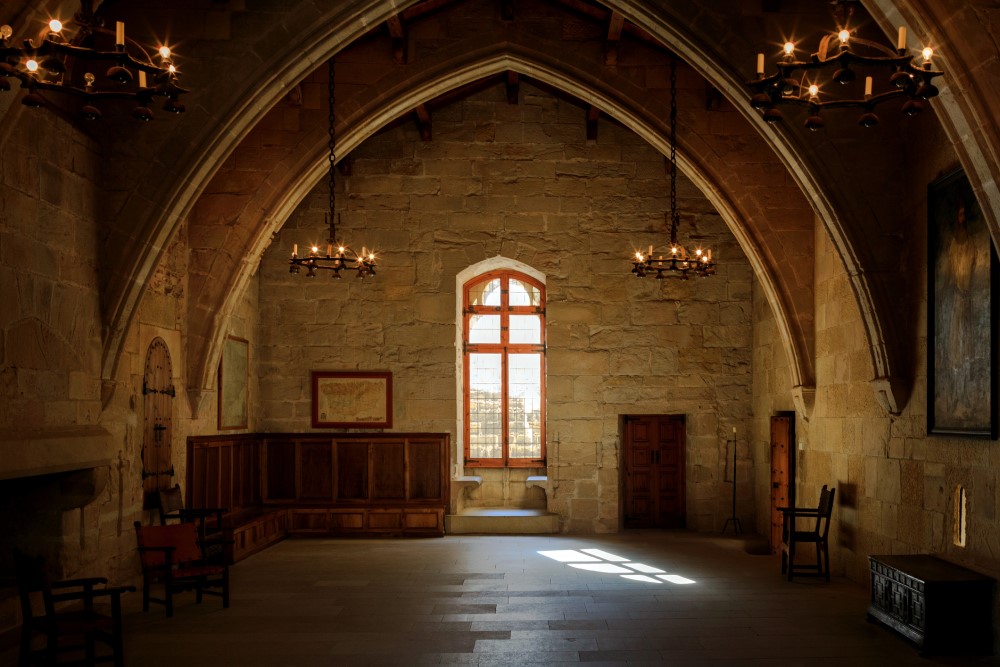The Recovering of the Altars
Beyond the Prosaic: Renewing the Liturgical Movement
edited by Stratford Caldecott
Edinburgh: T & T Clark, 1998.
(170 pages; cloth, soon to be issued in paperback)
by Richard J. Mammana, Jr.
The ease with which one can find polemical writings on modern Roman Catholic liturgy is not a cause for delight for this reviewer. Taking the liturgical movement and the reforms of the Second Vatican Council as their scapegoats for the ills of modern society, these works prophesy the demise of the Church herself with the charge that the novus ordo missae has essentially destroyed the pre-conciliar Church. So when traditional yet serious and scholarly commentary on the present and future of the Roman liturgy emerges, there is reason to take note. Beyond the Prosaic: Renewing the Liturgical Movement, the product of a Liturgy Forum in 1996 at the Oxford Centre for Faith and Culture, is just such a book. For its irenic attitude, its straightforwardly conservative stance and its candid appraisal of the state of the Roman liturgy in the wake of Vatican II, this book deserves a wide readership.
Liturgical Agendas
The book’s first essay, also its longest, surveys the various liturgical agendas that, though “not entirely separate, free of overlap or mutually exclusive,” can be discerned within the Roman Catholic Church today. In the last dozen and more years, two practices have received papal toleration: the celebration of the Mass in Latin, and the comparatively recent permission for women and girls to take part in the Mass as altar servers. That these permissions express a conciliatory attitude toward two directions in Roman Catholic practice is significant evidence for at least two agendas. But this essay also shows the reader that the fishnet categories of liberal and conservative don’t apply here. The real situation is much more complex.
The most influential and visible agenda, in fact the official agenda, according to M. Francis Mannion, is that of the International Commission on English in the Liturgy (ICEL). Mannion notes that one of “the more notable features of this agenda since the Council has been its internally evolutionary character.” Thus, though the council itself did not mandate the exclusive use of the vernacular, the Consilium responsible for reforms has allowed and directed the progressive lifting of restrictions on the vernacular, so much so that now the man in the pew will say, “Vatican II got rid of the Latin Mass.” With the Constitution on the Sacred Liturgy as its springboard, this agenda is propagated through work on the official level in liturgical revision and review today.
The second of the agendas, which has by its own high profile delineated itself the most from the others, is called “traditionalism and restoration.” Mannion places in this agenda grouping the schismatic Society of Saint Pius X (SSPX, the followers of Archbishop Marcel Lefebvre) and the numerous splinter groups deriving from it, as well as groups and orders in communion with the Holy See, such as the Priestly Fraternity of St. Peter (FSSP). “To a greater or lesser degree,” he writes, “a conviction operates among adherents of this agenda group that the authentic liturgy of Catholicism has been compromised since the Second Vatican Council and that the Mass of 1969 is fundamentally objectionable because it is neither in continuity with the pre-conciliar liturgical order nor an adequate expression of the fullness of the mystery of faith.” One wonders, however, about the placement together of such disparate groups as the SSPX and the FSSP; the former has willfully separated itself from the Church of the council while the latter adheres faithfully to the Holy See and the council while striving to preserve the Tridentine Mass under the provisions of the 1988 motu proprio Ecclesia Dei. Mannion does make it clear that the two sub-agendas are different, but their categorization together is still questionable.
(Unfortunately, Beyond the Prosaic appeared before the foundation of the Society of Saint John [SSJ], headquartered in the diocese of Scranton and dedicated to the renewal of the Church through solemn traditional liturgy. This Order, like the Priestly Fraternity of St. Peter, is growing rapidly, with young seminarians and laity offering support. The SSJ would likely have been grouped here as well, had it been active at the date of publication.)
The third agenda set forth is “the reform of the reform,” an effort at a “return to the true intentions” of the council’s liturgical changes. This movement takes its primary inspiration from Monsignor Klaus Gamber’s Reform of the Roman Liturgy (San Juan Capistrano, California: Una Voce Press, 1993), a powerful and succinct critique of the Mass versus populum and other “reforms that were actually introduced.” Cardinal Ratzinger’s introduction to the French edition of this book, and the efforts of such groups as Father Joseph Fessio’s Adoremus, indicate the level of support for this strategy of “authentic renewal” of the liturgy “in keeping with the principles of the Second Vatican Council,” though avoiding those things done after the council proper.
“Inculturating the reform” is the aim of the fourth movement that Mannion postulates. It seeks “a new pluralisation, diversification and decentralisation of Catholic liturgical life.” Overlap between this agenda and the work of ICEL and the official agenda are noted, as is the tendency for individual groups, especially in North America, to seize upon this agenda and to make it their own.
Finally, the “recatholicising of the reform” is presented as the agenda most adequate to advance ongoing liturgical reform. This agenda draws on the works of Henri de Lubac and Avery Dulles for its concept of catholicity—“not primarily . . . geographic extensiveness,” but rather the “spiritual depth, sacramental richness, religious exuberance and creativity of ecclesial institutions.” According to Mannion, this agenda incorporates the best of the other four and adds its own essential contribution: focused attention to the spiritual rather than the structural dimension of liturgical reform. Based on his experience as rector of the Cathedral of the Madeleine in Salt Lake City, even the “present liturgy is pastorally most edifying and expressive of Catholic fullness” when “celebrated with attentiveness to ritual and text, with spiritual profundity, nobility and solemnity, with well-formed ministerial leadership, and with rich musical, artistic and architectural elaboration.” That this kind of liturgical celebration is not by far the most often encountered in Roman Catholicism today is certainly indicative of the extent to which work needs to be done. It remains, then, for the revived liturgical movement to effect this transformation of a rite largely unappreciated by those who use it.
subscription options
Order
Print/Online Subscription

Get six issues (one year) of Touchstone PLUS full online access including pdf downloads for only $39.95. That's only $3.34 per month!
Order
Online Only
Subscription

Get a one-year full-access subscription to the Touchstone online archives for only $19.95. That's only $1.66 per month!
bulk subscriptions
Order Touchstone subscriptions in bulk and save $10 per sub! Each subscription includes 6 issues of Touchstone plus full online access to touchstonemag.com—including archives, videos, and pdf downloads of recent issues for only $29.95 each! Great for churches or study groups.
Transactions will be processed on a secure server.
more from the online archives
calling all readers
Please Donate
"There are magazines worth reading but few worth saving . . . Touchstone is just such a magazine."
—Alice von Hildebrand
"Here we do not concede one square millimeter of territory to falsehood, folly, contemporary sentimentality, or fashion. We speak the truth, and let God be our judge. . . . Touchstone is the one committedly Christian conservative journal."
—Anthony Esolen, Touchstone senior editor










